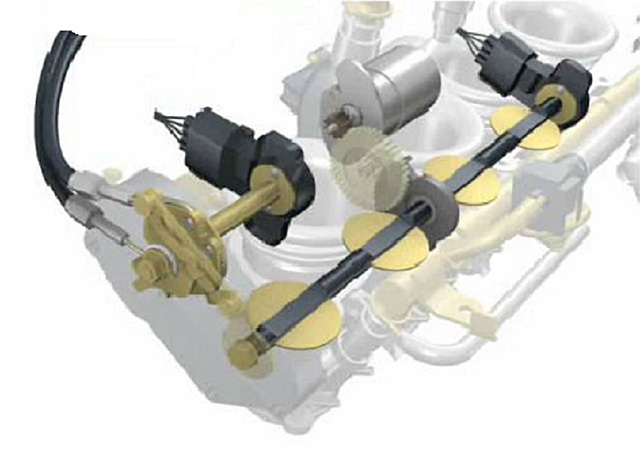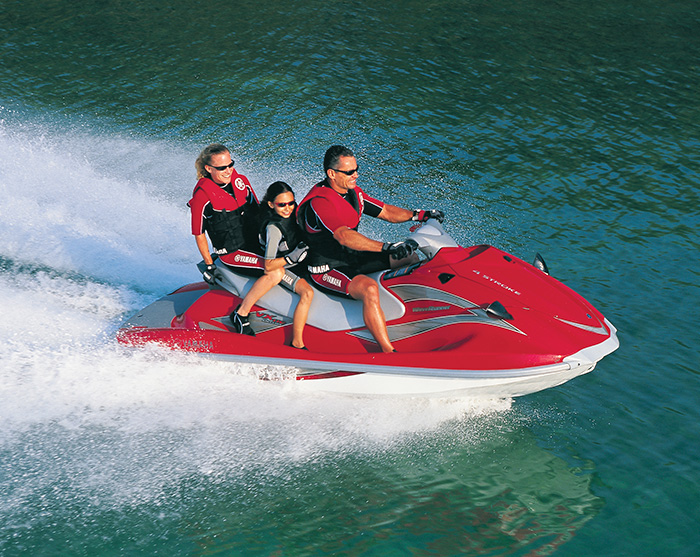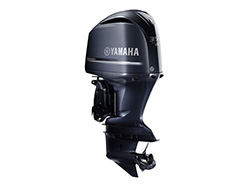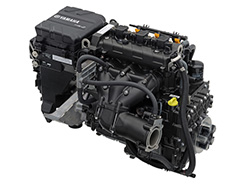Electronically-Controlled Throttle
Introducing the stories behind Yamaha Motor's technologies.

The VX110DX/SP WaveRunner (#1) released in 2005 was a model that marked a major change in the evolution of electronically-controlled fuel injection. The 1,052cc in-line 4-cylinder engine featured Yamaha’s first electronically-controlled throttle.
Up until that point, fuel injection had been controlled manually with the rider’s inputs directly opening and closing the throttle valves. The rider decided the amount of air intake to be provided with the throttle, and the electronics would control the fuel injection system to determine the proper amount of fuel and ignition timing required for engine rpm at any given moment. With an electronically-controlled throttle on the other hand, it detects a rider’s throttle inputs with sensors and sends the data to the ECU, which then determines the amount of intake air required and operates a servomotor to control the throttle valves.
A traditional cable-based (mechanical) throttle setup controlled the valves with essentially a 1:1 ratio of throttle input to valve operation. But with an electronically-controlled throttle, there are benefits to being able to use the data from each sensor to control the amount of intake air, including a better feeling from the engine, more stable idling, improved fuel efficiency and more eco-friendly performance. It also makes it possible to equip products with features that improve comfort. For example, in the FX Series models powered by a 1.8-liter engine, the Cruise Assist feature removes the need for minor throttle adjustments and makes it possible for the rider to cruise at a set rpm.
Evolution of the Electronically-Controlled Throttle
The motorcycle version of Yamaha’s electronically-controlled throttle was first put to practical use on the 2006 YZF-R6 (#2). The system was called the Yamaha Chip Controlled Throttle (YCC-T) and featured a compact 32-bit CPU that governed the four throttle valves. It could produce computations of inputs every 1,000th of a second, meaning even the slightest rider input would be met with an appropriately detailed response. This system gave the R6’s engine, widely regarded as high-revving due to putting out its maximum power after 14,000 rpm, an all-new level of smoothness.


Today, Yamaha’s electronically-controlled throttle is a fundamental feature that brings out the potential of various engines. The F350 outboard motor introduced in 2007 powered by a 5,330cc V8 engine (#3), the industry’s most powerful production outboard model, has improved low- and mid-range torque thanks to its Variable Camshaft Timing (VCT) system. It also employs an automatic multi-engine rpm synchronization function for two- or three-engine configurations. The all-new 3-cylinder TR-1 engine (#4) mounted on 2016 model WaveRunners also incorporates the latest version of Yamaha’s electronically-controlled throttle.
On the motorcycle side, high-displacement machines in the R-Series, the MT-10 (#5) and MT-09, the FJR1300, XT1200Z Super Ténéré and other bikes make use of the YCC-T. This allows for them to be equipped with selectable ride modes, traction control systems and more, bringing out the potential of their high-capacity engines and giving the models a more enjoyable ride.



